For many people, understanding medical information can be challenging. Even though healthcare practitioners are enthusiastic and willing to help, people can get lost amid the technical jargon.
Table of Contents
- 1. Get to Know Your Patient
- 2. Write Attractive Headlines
- 3. Use a Conversational Tone
- 4. Incorporate the Latest Health Developments into Your Content
- 5. Create A Variety of Content
- 6. Send personalized messages
- 7. Get Feedback from Your Audience
- 8. Spy Other Industries Producing Interesting Content
- Conclusion
Medical content that is too technical can fail to connect and engage with potential patients. Think about it, as a healthcare practitioner what’s the point of producing content that only you and your fellow healthcare practitioners understand? Reaching new patients is probably the reason why you’re producing the content in the first place, so it makes sense to tailor it to your audience.
Furthermore, when you consider that 80% of people search for medical information online before going to a doctor or hospital, then you’ll be leaving a lot of money on the table by not producing and promoting content that they are actively seeking.
But the big question remains: is it possible to create interesting and relatable content that demonstrates your medical expertise and specialty?
The answer is: Yes, you can.
In this article, we provide 8 steps to do just that as well as some tips on how to communicate better in your content so that you can attract the right patients to your business.
Let’s begin.
1. Get to Know Your Patient
The first step to creating engaging content is to develop a thorough understanding of your ideal patient. When you know your potential patients better, it becomes easier to create content that resonates with them.
You’re able to understand their fears, why they need your service or product, and how they search for it online. With this knowledge, you can create interesting content at different stages of the sales funnel to move your website visitors from strangers to long-lasting patients.
Two major ways you can conduct patient research are through:
- Keyword research
- A detailed buyer persona
Keyword Research
How do people find your service online? If you don’t know the words people use to search when they need your service, then it becomes difficult to attract these potential patients.
Many times, you may have a hunch about the keywords potential patients use but you may be right, and you may be wrong. However, with a keyword research tool, you can take the guesswork out of this process. Targeting the right keywords is important for your PPC management campaign.
Taking the time to perform keyword research helps you unravel the most common keywords your potential customers use to search for your service. There are many keyword tools you can use to find the appropriate keywords for your business. Our healthcare marketing agency recommends: SEMrush, Ahrefs, CognitiveSEO, KeywordTool.io, Ubersuggest, etc.
For instance, the Ubersuggest tool offers you insights about keywords free of charge. Think of any keyword you think potential patients will search for. Put this keyword in the search bar and click on “Search”:
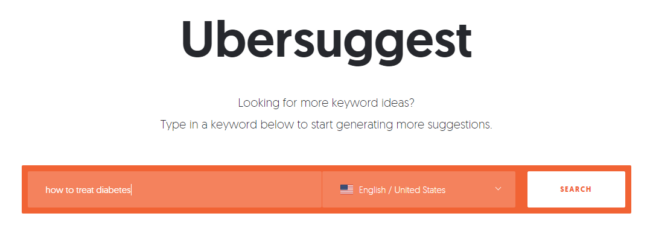
Details about the keyword come up like search volume, SEO difficulty, paid difficulty, and cost per click (CPC). This will show you how popular a keyword is among searchers.

You’ll also see similar keywords related to your business and details about them. In some cases, these keyword suggestions could provide the keywords you’re currently using.
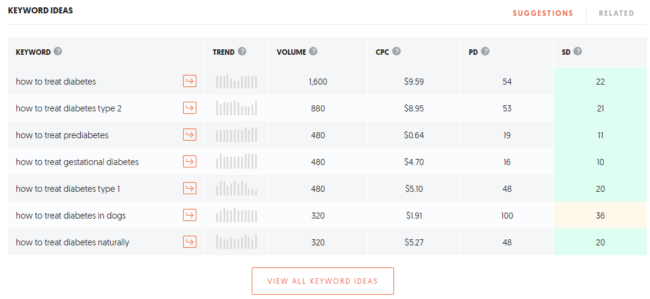
It also shows the pages currently ranking for your target keyword with the SERP analysis. Here’s an example:
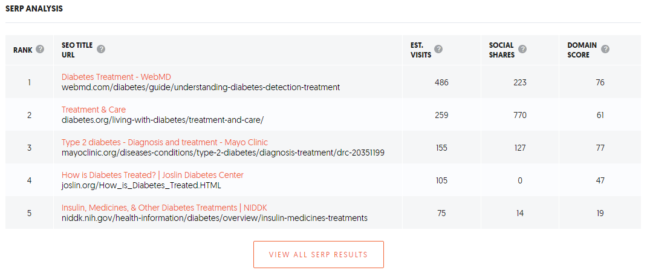
With keyword research, you can find the common keywords your users put in the search box and when you produce content to target these keywords, then you’re heading in the right direction because you’re producing answers to potential patients’ questions and they are more likely to find you.
Also, consider that 77% of people looking for health information on the internet began their session on a search engine. That’s why it’s important to start attracting potential patients right there on the search engine results pages.
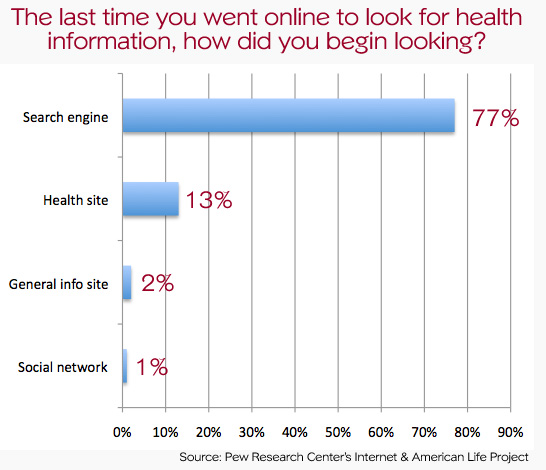
A detailed buyer persona
Who is your ideal customer? Of course, you want more customers to buy health products or patients for your practice, but you probably want someone who will come back time and time again. Or you want a patient that buys a specific package or upgrade.
It’s best to create a buyer persona so you know exactly who to target for your health business. You can create this persona based on the type of customers you want to attract or analyze the common traits of your current customers/patients.
To create an effective buyer persona, you need to make it as detailed as possible. Some things to include in your buyer persona are:
- Name
- Age
- Location
- Income
- Job
- Working hours
- Health challenges
- Marital status
- Number of children
- Likes
- Dislikes
- Hobbies
- Future aspirations
These details help you understand the people you’re trying to attract and creating this kind of profile is a good resource for when you’re trying to develop engaging content.
You can also have more than a single buyer persona for your business depending on the number of services or products you offer.
2. Write Attractive Headlines
Do you have the most interesting article with the most boring headline? Well, congratulations on convincing no one to read your content. Yes, that’s what happens when you have a dull headline.
According to the legendary copywriter David Ogilvy, on average 2 people out of 10 who see your headline will click-through to see your post. That is an extremely low conversion rate so if you want to beat this average, then you need to write better and more interesting headlines.
Your headline is what a visitor to your website uses to judge how interesting your page will be. And this applies to your pages that show up on search results.
According to Copyblogger’s Brian Clark, the aim of your headline is to get a visitor to read your first sentence. And then your first sentence should be interesting enough to get your visitor to read the second sentence. And on and on ‘till the end of your article.
Here are some points to keep in mind in writing interesting and catchy headlines:
Preach benefits:
People don’t read your posts because they like you. They usually read your content because of the potential benefits for them. Therefore, web visitors need to immediately get a sense of how reading your article is going to help them through your headline.
Provoke curiosity:
While your headline should share some benefits to a potential reader, it doesn’t have to give everything away. In a popular example of how a headline can affect the content’s reception, the New York Times published an article about Target’s Pregnancy Prediction Algorithm. This is the New York Times headline:

However, Forbes used this headline to publish their version of the story:

Which headline do you think will provoke more clicks? Yes, the Forbes headline hands down.
With almost 3.5 million views and counting for the Forbes article, you can see the importance of an interesting, clear, and compelling headline. It helps you communicate how great your content will be and attract people to read it. Not only does Forbes have high traffic for the article, but it also ranks number one for the keyword “target pregnancy prediction algorithm”.
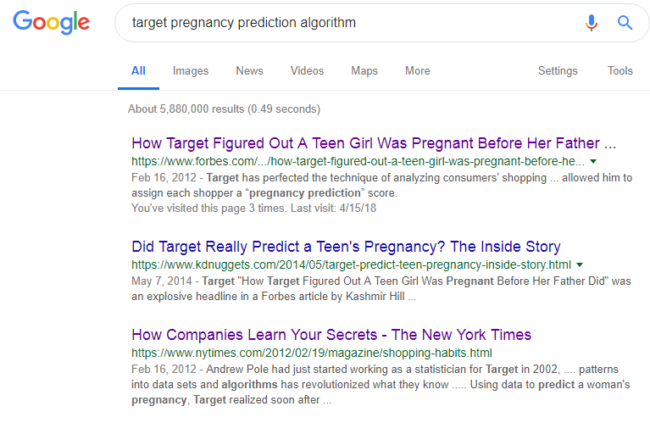
3. Use a Conversational Tone
In the health market, there are many studies, research papers, and articles that may appeal to other doctors or surgeons but are probably too technical for the average reader. Many people in the health sector are used to this style of writing, but your potential customers are not. Your content shouldn’t read like a thesis, especially when you’re writing it for potential customers who just want to have an idea of how to solve their personal health problems.
To make your content interesting to potential patients, you need to use a conversational style.
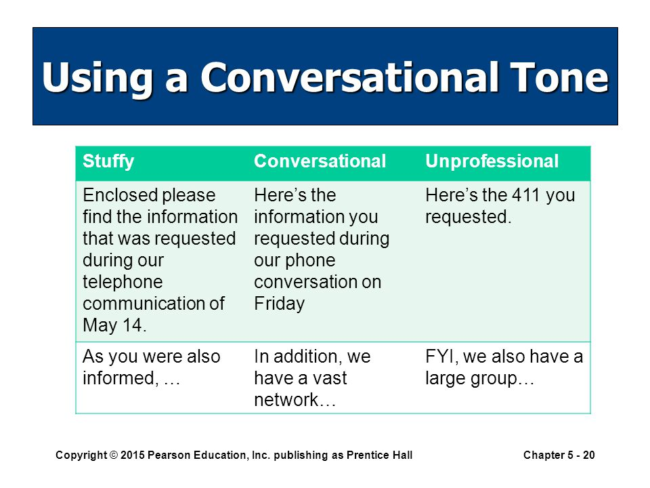
To take on this style, you need to do the following:
Simplify:
The main point of communication is to ensure that the 2 parties involved understand the message they want to pass across. Do you use obscure grammatical terms when talking to a 3-year-old kid?
Well, your potential patient is not a 3-year-old kid, but some studies show that terms and text should be simplified to match a 6th-grade reading level.
One way to make sure your article is understandable is to measure it against the Flesch reading ease score. Your content should come in at a score of 80 or above to ensure the general population can understand it.
Explain ambiguous terms:
It’s inevitable that you’ll have to use some technical terms in your healthcare content, which is just part of your job, your professional work, and reputation. However, to engage with an average reader/potential customer in the online space, you should always explain obscure terms to help your readers along and keep their interest.
Humanize your organization:
Healthcare decisions are very important and not taken lightly. People want to be well-informed before they commit to medical practice, which is why most people visit the “about page” after the home or landing page.
To connect with people, share what motivates you to provide health services and inspiring stories about your health care company. Stories and testimonials tend to resonate with visitors and make your organization look human rather than a robotic process just trying to take your money.
4. Incorporate the Latest Health Developments into Your Content
Things change fast in the health industry and as a health professional, you should be on top of these changes as they occur. Part of what makes your content interesting is to be able to use new information from trending studies and findings in the health sector.
Here’s an example where WebMD used latest events to inform their readers about health:

5. Create A Variety of Content
When people say “content”, most people automatically think articles and blog posts. But that’s not the only type of content.
To be honest, not everyone reads your content. Even for those who are willing and wanting to read a long blog post, they may not have the time. A study by Nielsen Norman Group found that an average website visitor will read between 20-28% of the words on a page.

Some forms of content you can have on your website apart from the written word are:
Videos
This is a form of content that has grown very popular over the last few years. YouTube is now the second largest search engine and has doubled in the number of search results that have popped up on Bing.
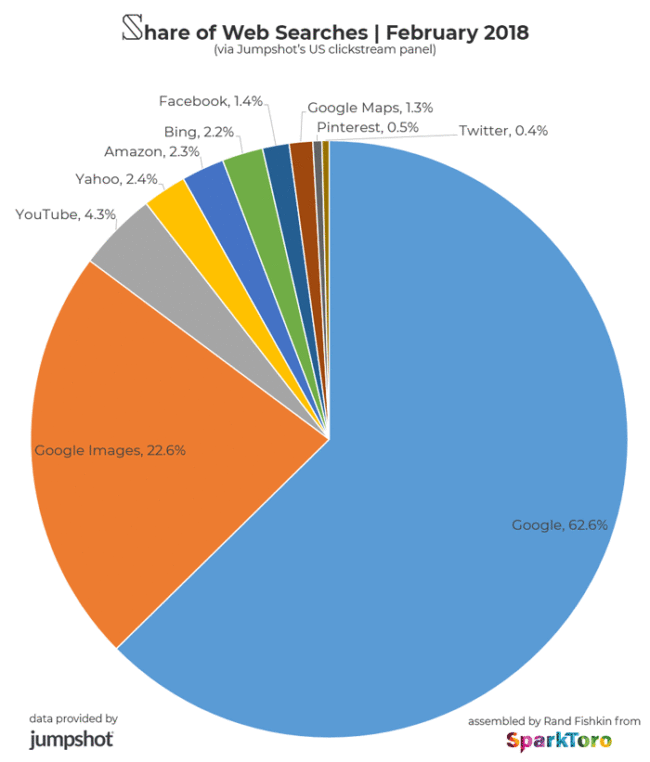
However, what you find is that many health websites fail to utilize video in their SEO services and healthcare digital marketing efforts, even though it’s an opportunity to show prospects visually about what your business does.
If you run a health practice, this is an opportunity to show potential patients the tools and equipment that help you provide certain services and sets you apart from your competition.
Here is an example of WebMD with video content on its website, which shows headlines that are attractive enough to lead into its written content. But as videos, they’re even more interesting:

Infographics
Do you need to explain a complex concept in a simple way? An infographic is a great way to achieve it. Many people find it easier to understand complex information when you present it through images. According to a study, 65% of people are visual learners.
Another benefit you can gain through infographics is that they tend to go viral more than written content. Demand Gen Report reveals that infographics can improve your website traffic by 12%.

This is an example of an infographic by World Health Organization explaining aging and health:
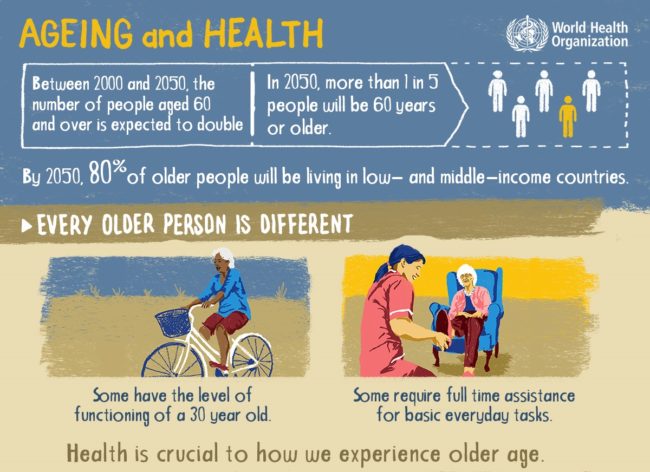
By creating an infographic of the locations used for Game of Thrones, Lawrence of Morocco got over 11,000 more website visits over 2 weeks.

Podcasts
However, right now there’s too much content. Gone are the days where people walked over to their bookshelf and picked up a volume of the Encyclopedia Britannica for their questions…right now there’s so much content on thousands of topics available that nobody can keep up. However, as a health practitioner, one way you can stay on point with more content is to do so while engaging in other activities.
That’s why audio podcasts have also grown popular over the years. According to a study by Edison Research and Triton Digital, 26% of Americans listen to podcasts, up from 24% in 2017. Think of it, 26% of the US population is about 73 million Americans. Some people listen to podcasts while exercising and others listen to them while driving. And to create podcasts, you don’t even need to start from scratch- you can just convert your written content into the audio format.
Below is an example of a podcast by dietician Christy Harrison:
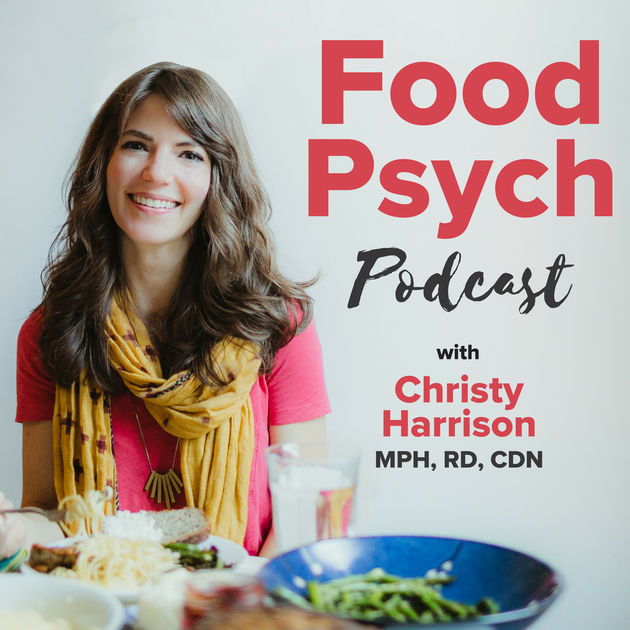
6. Send personalized messages
If you sell more than a single product or provide multiple services, different visitors to your website will be interested in different things. Sending personalized messages to prospects makes your content interesting to them individually and makes it look like you’ve taken the time to figure out what really matters to them. This is especially applicable to email marketing. When you capture a prospect’s email to follow up with them later about your services, personalization should be top of mind when creating the email.
It all starts with your email subject lines. For instance, personalized email subject lines get 26% more opens than non-personalized subject lines.
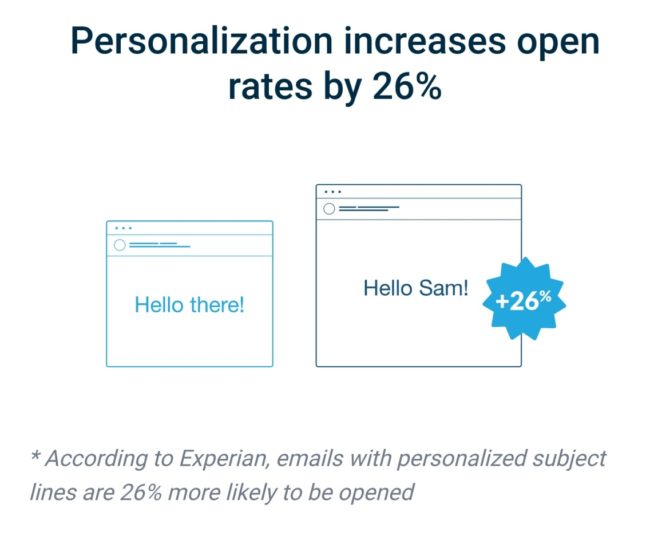
Personalization is so important that your prospects don’t even mind giving you more information about themselves just to receive personalized messages that are more related to them. A Salesforce study found that 57% of consumers are willing to share their personal data in exchange for personalized offers or discounts.
Likewise, 53% of them will share their data for a personalized shopping experience while 52% will sign up for specific product recommendations.
Send people the messages they want to see, and they’ll look forward to receiving more content from you. It’s a no-brainer because you can achieve this by using an automated email marketing software that does personalization automatically.
DeepSky offers a personalized calculator on its website to help businesses estimate their accounting budget for a month. Here’s an example:
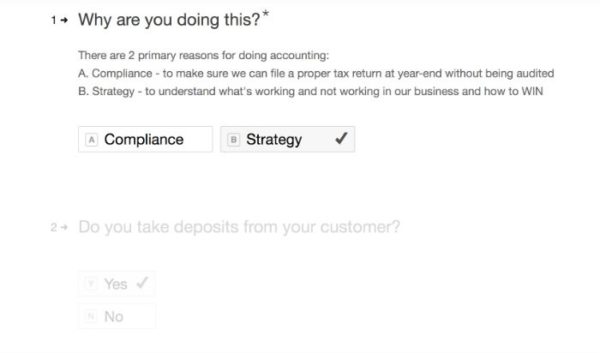
The website also gives a breakdown of the accounting costs. For a business owner, this is valuable content on how to effectively manage their finances:
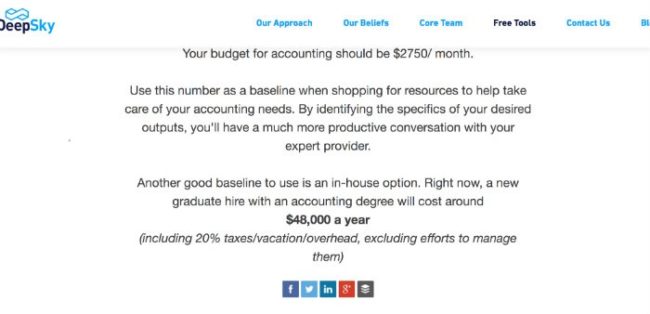
7. Get Feedback from Your Audience
Just because you’re interested in health jargon doesn’t mean your prospects are, which is why you should ask them for what kind of information they want to receive. Some ways to get more feedback from your website visitors are:
Conduct a survey:
You can draft questions about how knowledgeable people are about your services. Questions can be about your visitors’ pain points and what type of content they want to see on your website so you can get an idea of what to improve on in your marketing efforts.
You can also send the survey link to your email subscribers.
Use social media:
Currently, it’s important to interact with prospects and patients through social media and it’s also a great channel to get feedback about your services. For instance, you can ask your followers what they want to see on your website. If they’re a fan of your brand, many will happily offer their suggestions and inadvertently give you keyword ideas.
Promoting your content on social media also allows you to track their performance.
In a study, 57% of patients say where they chose to get treatment highly depended on the provider’s social media presence. Therefore, you want to reach out to these prospects and convince them to come to you for their health needs before they make their final decision.
Interview patients:
Another way to get feedback is to listen to your current customers or patients. What do they say when they come to see you? What are their most common complaints? Why did they choose you as their health practitioner?
This gives you ideas about the type of content that addresses the issues that your patients are most concerned about. Although keep in mind that it’s important to maintain patient confidentiality and be clear about what you need to know for the patient’s health compared to what they are willing to share for your marketing purposes.
8. Spy Other Industries Producing Interesting Content
To get more knowledge about how to create interesting content, you may have to look at other industries for inspiration.
Two popular industries that produce interesting content are marketing and entertainment.
You can check how these industries structure their content to make it attractive to their visitors and try to mimic it for your health business. One popular example of a website with attractive headlines and complementary content is BuzzFeed:
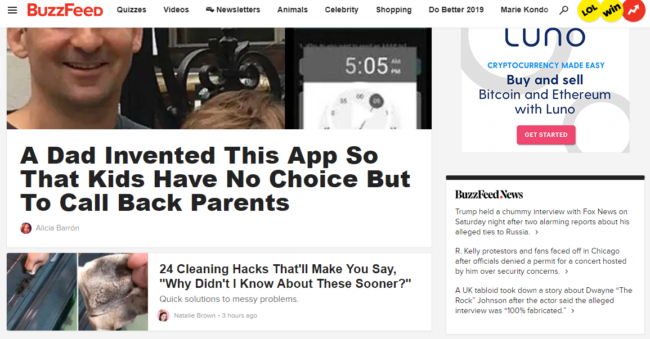
When you study other industries producing interesting content, you’ll get more knowledge on how to adapt those tactics to the health market.
Conclusion
There are many ways to create engaging content that resonates with the healthcare consumer. People have many questions when it comes to their health, and it’s vital that you can demonstrate your expertise through content. So, ask yourself, are you giving them the type of content that solves their problems?
You can improve your content tremendously by making it interesting and the byproduct is that you are more likely to convert prospects into patients.
If you don’t know where to start with creating interesting content, we can help. Contact Cardinal Digital Marketing today.

